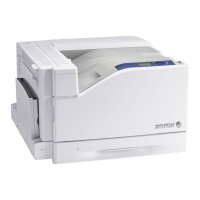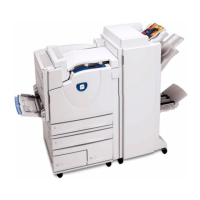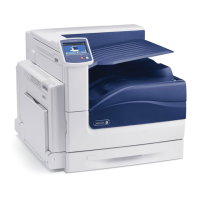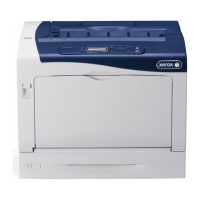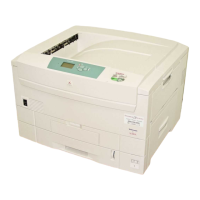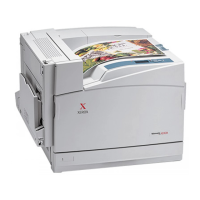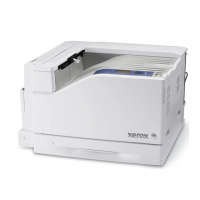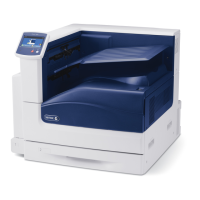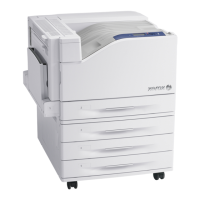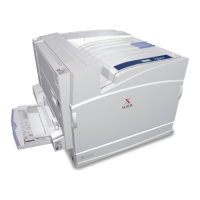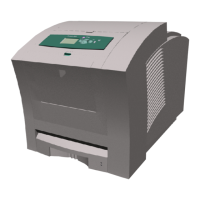3-16 Phaser 7400 Color Printer Service Manual
Measurement Techniques
1. Unless indicated otherwise, the instruction “switch On printer power” means for
you to switch On printer power and let the printer proceed through Power On Self
Test (POST) to a ‘Ready’ condition.
2. Conventions used in this manual to represent connectors
3. When instructed to take voltage, continuity or resistance readings on wiring
harness, proceed as follows; Check P/J 232–1 to P/J 210–5 by placing the red
probe (+) of your meter on pin 1 of P/J 232, and place the black probe (–) of your
meter on pin 5 of P/J 210.
4. When you are instructed to take resistance readings between “P/J 232 <=>
P/J 210” (without specified pin numbers), check all pins. See "Wiring Diagrams"
on page 10-17 for the location of all wiring harnesses and pins.
5. When you are instructed to run a test, run the Service Diagnostics test associated
with the component being examined.
6. When you are instructed to take a voltage reading, the black probe (–) is
generally connected to a pin that is either RTN (Return) or SG (Signal Ground).
You can substitute any RTN pin or test point in the printer, and you can use FG
(frame ground) in place of any SG pin or test point.
7. Before measuring voltages make sure the printer is switched On, the Imaging
Unit and the paper trays are in place, and the interlock switch is actuated, unless a
troubleshooting procedure instructs otherwise.
8. All voltage values given in the troubleshooting procedures are approximate
values. The main purpose of voltage readings is to determine whether or not a
component is receiving the correct voltage value from the power supply and if
gating (a voltage drop) occurs during component actuation. Gating signals may
be nothing more than a pulse, resulting in a momentary drop in voltage that may
be difficult or impossible to read on the average multi-meter.
9. When a troubleshooting procedure instructs you to replace a non-spared
component and that component is part of a parent assembly, you should replace
the entire parent assembly.
10. Ensure that you are using a supported media size and type, see "Media and Tray
Specifications" on page 1-18.
11. Power and signal grounds are connected to the frame ground. All circuit
troubleshooting can be performed using the metal frame (chassis) as the
grounding point. To locate connectors or test points, see "Plug/Jack Locator
Maps" on page 10-2 or "Wiring Diagrams" on page 10-17 for more information.
s7400-314
PlugJack
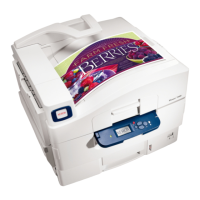
